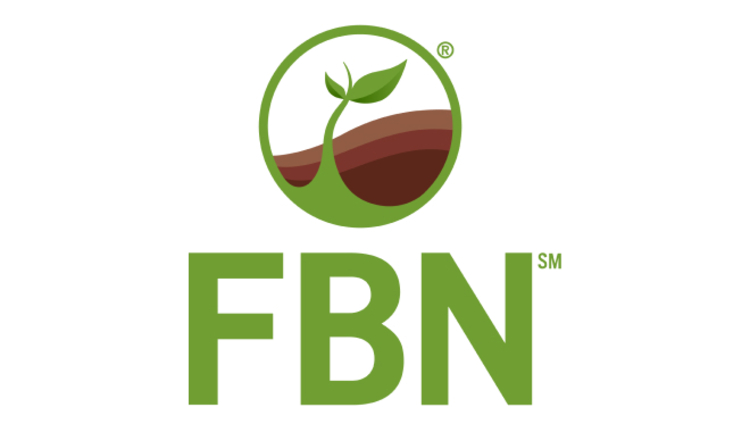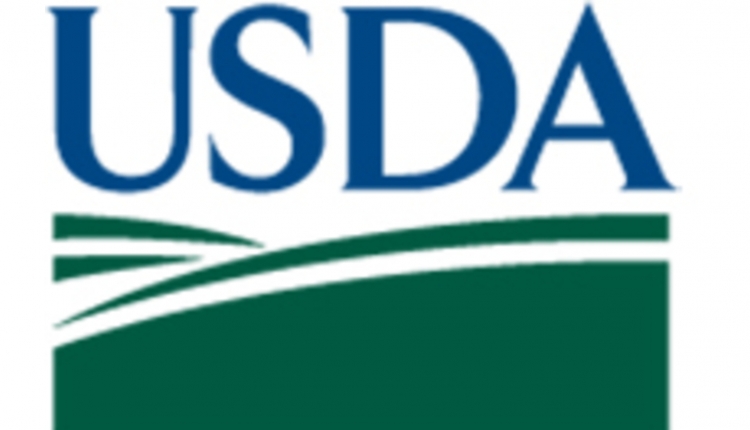The information below has been supplied by dairy marketers and other industry organizations. It has not been edited, verified or endorsed by Hoard’s Dairyman.

Looking at historic data, this has been a time of unchartered waters for the global feed ingredient market – but in the works for a while, says Arlan Suderman, Agricultural & Soft Commodities Market Analyst for StoneX trading group.
“The purpose of the market is to bring supply and demand into balance. Low prices discourage production while stimulating demand. The opposite is true as well. Global feed demand has been increasing for a number of years, but several years of low prices discouraged sufficient expansion of production,” explains Suderman. “Several contributing factors acted to speed up draining supplies while money supply rose $4.6 USD trillion during the pandemic. A portion of that money made its way into the markets, making it easier for buyers to bid up prices in a short market which amplified and sped up market response. The role of high prices currently is to encourage expanded production in the world to bring it back into balance with this expanding demand base.”
Weather impacts soybean supplies
While dairy ration composition will vary region to region based on local crop production, soybeans and their by-products are common denominators in global dairy diets due to their high energy and protein density. By-products like soya hulls are effective at stretching forage and supporting rumen function as a high-quality source of digestible fibre. Requiring a combination of heat, sunlight units, humidity and moisture, soybean production is limited to a handful of countries, with Argentina, Brazil and the US accounting for more than 80% of the global soybean crop from 2020-21. Following China, the European Union is the second highest importer of soybeans in the world.
Historically, the US has been the world leader in soybean production, producing 120.52 million metric tonnes from 2019-2018. Recently, Brazil has overtaken the US, with forecasts projecting the South American country to have a record 137 million metric tonnes at the close of this year’s harvest, which peaks in March and tends to finish in May.
Despite having a record 2021 harvest, Brazil farmers were also challenged by environmental conditions related to La Nina weather patterns with severe drought delaying 2020 planting and subsequent harvest.
This has come at a time when US soybean production is still at a point of recovery following the impact of extreme weather conditions during the 2019 spring planting season, which went on to impact the 2019 autumn harvest, leading to tighter stock supplies. The Midwest region of the country where the majority of the crop is produced experienced double the season rainfall through the typical planting window of April through June, delaying planting and reducing yields. For context, 74% of the soybean crop was planted by late May in 2018, whereas only 29% was planted by late May in 2019. These delays also resulted in nearly 31 million hectares of land intended for soybean production to be planted into other crops. With a more favourable 2020 planting season, 2020 saw US soybean production at more typical production levels, up 16% from the previous year. Midway through the 2021 growing season, corn production is currently being challenged by low rainfall totals and extreme heat in the region.
Corn (maize) reaches record highs
Due to corn (maize) and soybeans doing well in the same climatic regions and in feed rations, price movement in one tends to influence the other and adverse weather tends to impact both, says Bill George, Senior Agriculture Economist for the United States Department of Agriculture Foreign Agricultural Service.
“Corn requires a lot of nitrogen for top yields while soybeans fix nitrogen in the soil which enhances a planting schedule that rotates corn and soybeans. Soybeans also works well on the farm as its planting and harvest schedule fits well with corn and allows for better use of manpower and equipment,” explains George.
This relationship is strong in the US and can be seen in other top corn-growing areas, however, economics and other factors play a role.
“Much of the corn in more northern areas is double cropped following soybeans in Brazil, taking advantage of the nitrogen fixed in the soil by the previous soybean crop,” says George.
In 2020, the US produced nearly 32% of the global corn crop, followed by China with 23% of production share and Brazil with nearly 10%. Even with its high levels of domestic production, China is the world’s largest importer of corn, followed by Mexico and the European Union.
Given the synergistic climate relationship between corn and soybeans, delayed soybean plantings and harvests seen in Brazil this year were also experienced in its corn crop.
“In Brazil, the delay pushed planting the second corn crop, which is the largest share of Brazil’s production, later beyond the optimum planting window. That meant that the critical reproductive phases of the corn crop were pushed back beyond the end of the rainy season, significantly reducing production prospects for the current year, further tightening global corn supplies at a time when global demand is surging to record high levels,” explains Suderman.
According to recent reports by the USDA, Brazil’s 2020-21 marketing year corn crop yield is estimated to be down 10% from last year’s crop, which is 5% lower than the 5-year average. Producers in the states of Paraná, Mato Grosso do Sul, Minas Gerais, and São Paulo account for 36% of Brazil’s second-season production and have experienced drought from March throughout May.
Competing with soybean acreage, US corn producers have been challenged with the same environmental challenges during the 2019 season with delayed planting and fewer production acres resulting in a 4.8% decrease in production compared to the previous year. Improved growing conditions saw the 2020 harvest back to typical production levels.
Growing markets contribute to the grain and oilseed rally
With many moving pieces working together to influence supply and demand for grain and oilseed markets, China is a prime factor impacting prices, says George.
“China represents close to 60% of global trade in soybeans and is a major importer of many agricultural products. Growing Chinese demand across the board for many products underlies the global demand growth that helps support prices,” he says. “For soybeans, this growing demand has been pressuring the soybean market for more than 15 years and has helped strengthen prices required to support acreage expansion to meet this demand.”
In 2018, China’s national pig herd, the world’s largest, was cut in half within a year as African Swine Fever (ASF) ripped through the country. As a result, competition for feed commodities decreased. In the 4 years prior to 2018, average annual growth in China soybean imports was just over 8 million tonnes. Annual growth in 2017-18 was only 500,000 tons and in 2018/19, down nearly 12 million tonnes. Nearly two years on, China is rapidly expanding its pig herd, resuming its place of buying competition for feed commodities.
“Any shortfall in China demand, such as what we experienced with the recent ASF, or weather related crop shortfalls that reduce supplies, has a positive impact on soybean and corn prices,” explains George. “In the current situation, the return of China to the feed market has been the primary driver. In response to ASF, China also banned food scraps from feed mixes, increasing the concentration that pork production has contributed to import demand growth.”
For the US, large soybean stocks that developed during the height of ASF in China quickly evaporated with the return of Chinese demand. This strong demand also chewed through supplies in Brazil, exacerbating the issue with this year’s delayed harvest.
“With ASF waning, China demand rose 16 million tonnes in 2019-20. This reversal of demand was the driver of the current price spike. The 2019 US soybean harvest was down 24 million tonnes with the corn harvest similarly impacted. In some ways, this was fortunate as it absorbed all of the decline in China demand plus pulled stocks down 10 million tonnes from record levels. However, stock volume was still near record highs – third highest – setting up the current situation. The low prices and large stocks kept US plantings in check at 6% below 2017 and 2018. This cut 2020 production 8 million tonnes from 2018 with similar yields,” explains George. “In Brazil, soybean supplies were already tighter with a short harvest in early 2019. So, by 2020, with China poised to ramp up purchases, the supplies were not there and all that was available was vacuumed up, running stocks down to minimums and prices shot higher.”
Another factor driving the corn and soybean market is that both commodities are globally used for the production of biofuels, notes Suderman.
“There is a rising new generation of renewable fuels made from edible oils, such as soy oil, canola oil, palm oil, etc. This new generation of renewable fuels has high value for uses stretching from truckers to passenger airlines,” he says. “They are willing to pay virtually any price for the fuel to meet emerging global green fuel requirements, dramatically increasing demand for soy oil and corn oil. Much more processing plant capacity is being built in America currently than there is feedstock to supply these plants.”
In early July 2020, US soybean prices hovered around $328.85 USD per metric tonne ($8.95/bu), reaching $610.31 ($16.61/bu) by May 12, 2021. The market quickly dropped by nearly 9.5% by May 26. Recovering to $582.02 ($15.84/bu) by June 4, the market closed at a low of $532.41 ($14.49/bu) on June 16. This recent decline is attributed to weakened global vegetable oil prices and demand uncertainty.
Coming off its record production year, Brazil has also seen high soybean prices. In June 2020, soybeans were selling for $383.57 USD per metric tonne (1 BRL = 0.20 USD), landing at $678.98 by May 2021.
China has also been aggressively increasing corn purchases, with coarse grain imports from the US forecasted at 46.3 million metric tonnes, of which corn imports make up 25 million metric tonnes.
“Chinese purchases of US corn have added to demand, helped pull down domestic supplies and led to price increases. As stocks get tighter, the market becomes more volatile and factors impacting supply or demand have a larger impact on prices,” explains George.
In July 2020, US corn prices saw a high of $137 USD per metric tonne ($3.48/bu) early in the month, which quickly increased month on month to a peak of $304.31 ($7.73/bu) in early May 2021. Prices broke from their month and a half climb of 35% from the start of May to May 12, dropping to $257.07 per metric tonne by May 17, recovering to $275.18 ($6.99/bu) by June 10.
Palm
Rumen-protected fat supplementation is an effective tool to meet the high energy requirements of dairy cows, while also delivering fatty acids to support different areas of cow performance. Palmitic acid (C16:0) effectively increases milk fat production, with palm being the only prime source for C16:0. Palm also contains significant levels of oleic acid (C18:1) which plays an important role in improving cow fertility and body condition, making palm an integral ingredient in rumen-protected fat supplements.
The majority of the world’s palm production comes out of Indonesia and Malaysia, says Alvin Ong, commodity market expert connected to Volac Wilmar Feed Ingredients, a leader in global feed fat production. According to him, a combination of pandemic, government policy and competition influenced price rises this last year.
“Indonesia is the biggest producer of palm but harvesting volume has been down due to COVID-19 outbreaks among plantation employees. The Indonesian Palm Oil Association has recently gotten involved, urging plantations to improve biosecurity protocols,” says Ong.
Palm oil supplies are already tight in the region, with Indonesia mandating a 30% biodiesel programme in late 2019, which has not only cut into the country’s export supply but contributed to increases in export levies.
According to both Suderman and George, palm oil prices have also reflected the overall tightness in the vegetable oilseeds balance sheet. Data from the Malaysian Palm Oil Council shows palm oil increased by 5% in mid-May to close near a record high on the soybean rally.
“There is a correlation between soybean oil and palm oil prices so the overall bullish sentiment in soybean oil has contributed to palm oil’s strong performance in recent months. Furthermore, tightness in the canola and sunflower crops in the EU and Black Sea also place greater strain on the vegetable oil global balance sheet,” says Suderman.
Challenging logistics
While commodity markets and freight prices are a regular influence on feed prices, a novel factor has been long-lasting disruptions to the global shipping industry. This was initially triggered by national lockdowns due to COVID-19, says Lionel Margaka, Group Supply Chain Manager for Volac Wilmar Feed Ingredients.
Imports and exports of agricultural commodities are directly tied to consumer good logistics. With majority of consumer goods being manufactured in Asia, shipping liners will transport these products to destinations like Europe and the United States where containers will be brought in-land to be unloaded. A portion of these containers will then be re-loaded with export goods to be sent back to Asia for trade, along with empty containers so the cycle can continue.
“In January and February of 2020, we saw hold-ups starting in China as liner companies started to reduce the number of cargo ships being sent out due to lockdowns slowing consumer trade. Strict lockdowns also prevented the return of empty containers, leading to a build up of containers in certain parts of the world and a severe shortage in others. This combined with a shortage of ships led to a huge imbalance, with some ports having no containers and no shipping space to others having no space and an abundance of containers, or plenty of space and no containers,” explains Margaka.
Container availability was also impacted by local lockdowns slowing container returns. In typical conditions, it takes around 5-10 days for a cargo ship to be docked, containers taken to their destination and then returned to the port. At the height of the national lockdowns, this process could take upwards of five weeks. In the UK, port congestion was also increased due to post-Brexit trade disruptions in March 2021, leading to compounded container availability issues in Europe.
This imbalance created several challenges in the supply chain, says Margaka, with the shortage of containers leading to companies like Volac Wilmar Feed Ingredients shifting from container shipping to bulk where possible to keep feed ingredients coming into manufacturing facilities.
In the US, the container shortage has threatened agricultural exports. According to the Agriculture Transport Coalition, carriers are increasingly refusing to release containers once unloaded with consumer goods to be sent inland for less valuable agricultural products. Instead, they are opting to send back greater amounts of empty containers to Asia to capitalize on the booming consumer trade, avoiding time delays associated with getting containers refilled in the US for export. This has spurred nearly 300 US agriculture and forest companies and national organisations to urge the United States Department of Transportation to intervene in late April 2021.
From a cost perspective, Margaka says they began seeing freight prices noticeably increase from July 2020, with shipping prices from Indonesia and Malaysia to Europe reaching a 300% increase by October and 600% increase by April 2021.
“Freight is a direct component to the total cost value of a product, with a company’s margins dictating how much of it can be swallowed and how much has to be passed on to the customer,” says Margaka.
Reaching an equilibrium
Until global supply and demand come into balance again, the market can expect the current cycle of elevated prices to last, says both George and Suderman.
“When that is going to happen is hard to predict. There are always production issues in play, either record yields or less than ideal weather which cuts yields. In this case, we have ASF impacting global markets, sending prices below equilibrium levels, discouraging production growth, and raising stocks. Then conditions rebound with equal strength in the other direction, causing tighter supply levels and sending prices higher,” notes George. “Over the long term, prices will track near this equilibrium level when supply and demand are roughly in balance and stocks are adequate to offset any minor demand or supply changes without impacting the flow of product from producers to end-users. Significant events that impact supply or demand always result in higher price volatility and a bumpy ride until equilibrium is restored. That is the situation currently in play as the market adjusts and eventually moves back to equilibrium.”








